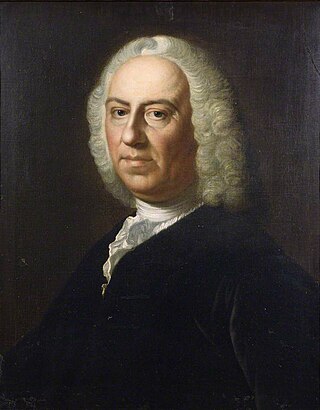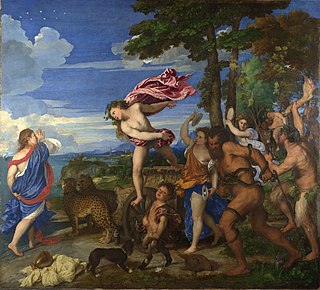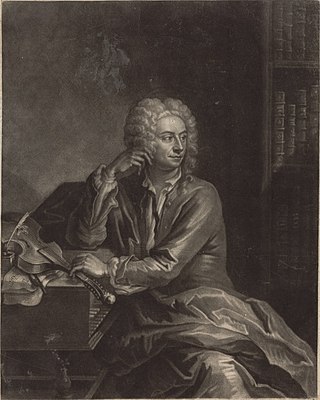
Claudio Giovanni Antonio Monteverdi was an Italian composer, choirmaster and string player. A composer of both secular and sacred music, and a pioneer in the development of opera, he is considered a crucial transitional figure between the Renaissance and Baroque periods of music history.

Johann Joachim Quantz was a German composer, flutist and flute maker of the late Baroque period. Much of his professional career was spent in the court of Frederick the Great. Quantz composed hundreds of flute sonatas and concertos, and wrote On Playing the Flute, an influential treatise on flute performance. His works were known and appreciated by Bach, Haydn and Mozart.

Francesco Cavalli was a Venetian composer, organist and singer of the early Baroque period. He succeeded his teacher Claudio Monteverdi as the dominant and leading opera composer of the mid 17th-century. A central figure of Venetian musical life, Cavalli wrote more than forty operas, almost all of which premiered in the city's theaters. His best known works include Ormindo (1644), Giasone (1649) and La Calisto (1651).

Francesco Xaverio Geminiani was an Italian violinist, composer, and music theorist. BBC Radio 3 once described him as "now largely forgotten, but in his time considered almost a musical god, deemed to be the equal of Handel and Corelli."
Vicente Lusitano was a Portuguese composer and music theorist of the late Renaissance. Some of his works on musical theory and a small number of compositions survive. Lusitano was for a time a Catholic priest and taught in several Italian cities, but later converted to Protestantism.

Baldassare Galuppi was an Italian composer, born on the island of Burano in the Venetian Republic. He belonged to a generation of composers, including Johann Adolph Hasse, Giovanni Battista Sammartini, and C. P. E. Bach, whose works are emblematic of the prevailing galant music that developed in Europe throughout the 18th century. He achieved international success, spending periods of his career in Vienna, London and Saint Petersburg, but his main base remained Venice, where he held a succession of leading appointments.

Francesco Canova da Milano was an Italian lutenist and composer. He was born in Monza, near Milan, and worked for the papal court for almost all of his career. Francesco was heralded throughout Europe as the foremost lute composer of his time. More of his music is preserved than of any other lutenist of the period, and his work continued to influence composers for more than a century after his death.
Antonio Lotti was an Italian composer of the Baroque era.

Francesco Landini was an Italian composer, poet, organist, singer and instrument maker who was a central figure of the Trecento style in late Medieval music. One of the most revered composers of the second half of the 14th century, he was by far the most famous composer in Italy.

Tommaso Michele Francesco Saverio Traetta was an Italian composer of the Neapolitan School. Along with other composers mainly in the Holy Roman Empire and France, he was responsible for certain operatic reforms including reducing ornateness of style and the primacy of star singers.

Agostino Steffani was an Italian bishop, polymath, diplomat and composer.

Heinrich August Marschner was a German composer best known for his operas. He is considered to be the most important composer of German opera between Weber and Wagner.
Jan Dismas Zelenka, baptised Jan Lukáš Zelenka was a Czech composer and musician of the Baroque period. His music is admired for its harmonic inventiveness and mastery of counterpoint.
Francesco Onofrio Manfredini was an Italian Baroque composer, violinist, and church musician.

Francesco Corbetta was an Italian guitar virtuoso, teacher and composer. Along with his compatriots Giovanni Paolo Foscarini and Angelo Michele Bartolotti, he was a pioneer and exponent of the combination of strummed and plucked textures referred to today as "mixed" style.

L'Arianna is the lost second opera by Italian composer Claudio Monteverdi. One of the earliest operas in general, it was composed in 1607–1608 and first performed on 28 May 1608, as part of the musical festivities for a royal wedding at the court of Duke Vincenzo Gonzaga in Mantua. All the music is lost apart from the extended recitative known as "Lamento d'Arianna". The libretto, which survives complete, was written in eight scenes by Ottavio Rinuccini, who used Ovid's Heroides and other classical sources to relate the story of Ariadne's abandonment by Theseus on the island of Naxos and her subsequent elevation as bride to the god Bacchus.

Attilio Malachia Ariosti was a Servite Friar and Italian composer in the Baroque style, born in Bologna. He produced more than 30 operas and oratorios, numerous cantatas and instrumental works.
Francesco Mancini was a Neapolitan composer.
Michael Christian Festing was an English violinist and composer. His reputation lies mostly on his work as a violin virtuoso.
Francesco Bartolomeo Conti was an Italian composer and player of the mandolin and theorbo. He also wrote the oldest mandolin method book that has survived.












